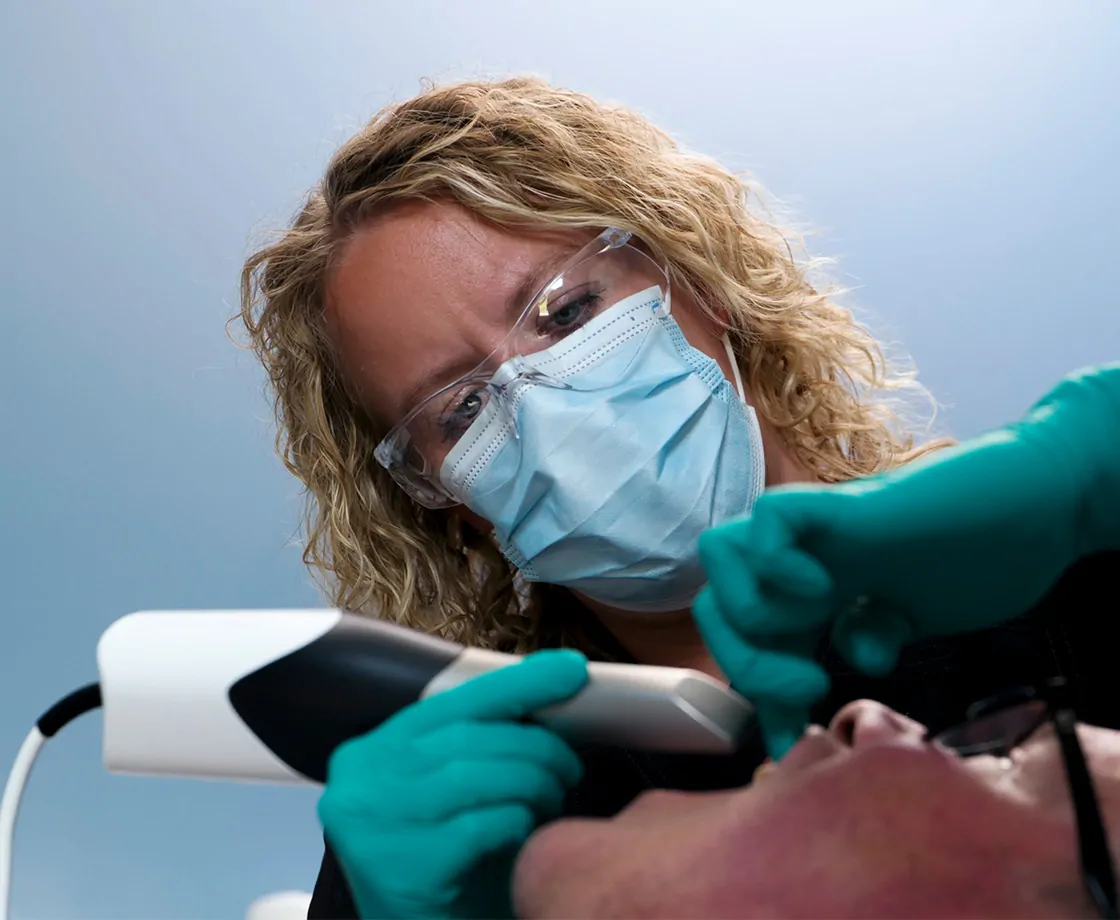Intraoral cameras are small, handheld devices that capture high-resolution images of your teeth and gums from inside your mouth. These real-time images are displayed on a screen, allowing you and our Grand Rapids dentist to clearly see areas of concern like decay, cracks, or gum issues. Intraoral cameras improve diagnosis, enhance patient understanding, and support more accurate treatment planning—all while making dental visits more interactive and informative.
Learn more about how an can make your visit more efficient below.

What Can an Intraoral Camera Detect?
These small, pen-sized devices used every day inside our Grand Rapids, MI, dental office, are equipped with high-resolution cameras and LED lighting, providing a close-up view of your teeth and gums that is far more precise than the naked eye alone.
With an intraoral camera, we can detect a variety of dental issues early on, including:
- Cavities forming in hard-to-see areas
- Small cracks or fractures in teeth
- Worn-down or damaged fillings
- Gum inflammation or signs of periodontal disease
- Plaque and tartar buildup
- Signs of oral lesions or abnormalities
Early detection is crucial in preventive dental care, and the intraoral camera helps us catch problems before they progress—often preventing more extensive and costly treatment later.
Procedures Made Easier With Intraoral Cameras
Intraoral cameras don’t just help with diagnosis—they also play a key role in improving the efficiency and precision of dental procedures. Whether you’re getting a filling, dental crown, or undergoing periodontal treatment, the real-time visuals assist our team in planning and delivering care with greater accuracy.
These cameras also enhance patient understanding. You can view the images on a nearby screen, which allows our dentist to explain issues and proposed treatments in a visual, straightforward way. This builds trust, supports informed decision-making, and makes patients more involved in their oral health.
Over the years, intraoral cameras have become a favored tool in many modern dental offices. They speed up the exam process, improve documentation, and help track changes in your mouth over time. The images can also be shared electronically with specialists or insurance providers as needed.

